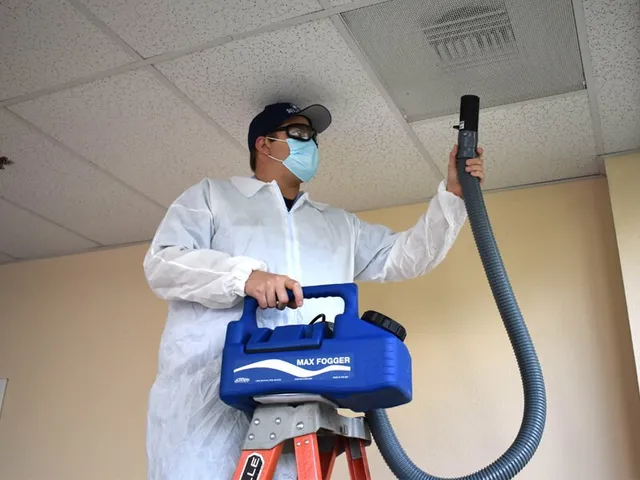Air Duct Sanitizing: A Complete Guide to Benefits and Best Practices

Have you ever considered the importance of sanitizing your air ducts to maintain clean and healthy indoor air? While we understand the benefits of a good air duct cleaning, the significance of thorough sanitization often goes unnoticed. In this article, we’ll explore the role of air duct sanitizing, delve into the process, and highlight the best practices for optimal and safe results.
What is Air Duct Sanitization?
Air duct sanitizing acts as a vital shield for indoor air, ensuring cleanliness and freshness. During a comprehensive clean-up, unique sanitizing agents eliminate harmful bacteria, germs, and microorganisms, safeguarding the air you breathe.
Why Air Duct Sanitization Matters:
Imagine your air ducts contaminated with mold or infested with small critters, posing a risk to your health and well-being. This is where air duct sanitization becomes imperative. It efficiently eradicates lingering mold spores and eliminates unpleasant vermin odors from your ducts, reducing the chances of recurrence or further infestations.
Air duct sanitization provides relief for those dealing with allergies or asthma by removing allergens, bacteria, and contaminants from your air ducts, improving respiratory health.
Additionally, when moving into a new home, sanitizing the air ducts ensures a fresh start by eliminating any unidentified pollutants left behind by previous occupants. It provides the reassurance that your indoor air quality is top-notch.
Leave the Sanitizing to Professionals:
Air duct sanitization is best handled by trained experts who follow proper safety protocols and employ effective techniques. Various methods, such as fogging or spray applications, are utilized to deliver the sanitizing agents. One popular approach is sporicidal fogging, which involves atomizing an EPA-registered disinfecting solution into tiny droplets, ensuring thorough coverage of every surface in your duct system. These sanitizing products are safe for home use and leave no lingering odor.
How Often Should Air Ducts be Sanitized?
While there are no strict rules, regular air duct cleaning is generally sufficient. However, certain circumstances may require immediate sanitization. These include water leaks or damage in your duct system, noticeable foul odors, or suspected mold or bacterial growth. Addressing these issues promptly helps maintain indoor air quality and create a healthier living space.
Safety and Quality Assurance:
For your air duct sanitizing needs, it’s important to rely on experienced professionals who possess the necessary knowledge and skills. They use top-rated sanitizing products and adhere to safety protocols. Sporicidin, an EPA-registered disinfectant commonly used in hospitals and medical facilities, is a trusted option known for its low toxicity and reliable sanitization.
Conclusion:
Air duct sanitizing plays a significant role in maintaining clean and healthy indoor air quality. By eliminating harmful bacteria, mold spores, and other pollutants, it offers a range of benefits. This includes improved respiratory health, reduced allergens, and enhanced protection for individuals at risk.
Partnering with trusted experts, implementing effective sanitization techniques, and following industry standards will ensure that you enjoy the fresh and clean air you deserve.




